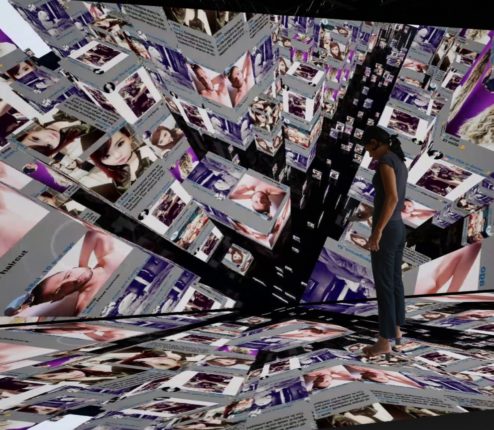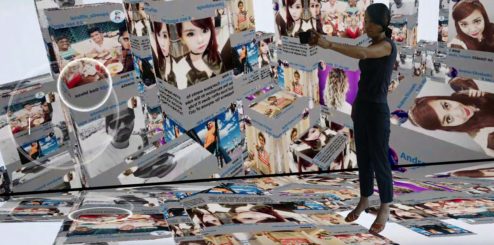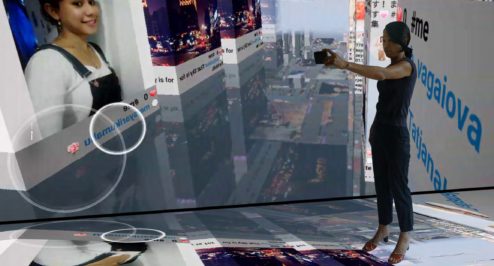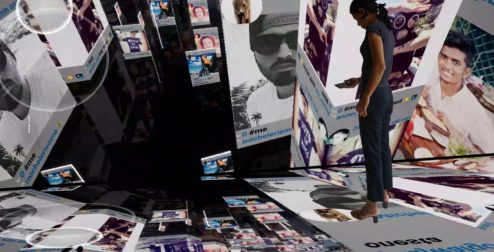MOMENTUM AiR
21 January – 10 February 2018
ARTIST BIO
Marc Lee (born 1969) is a Swiss media artist. Since 1999, he has created network-oriented interactive projects, interactive installations, media art, internet art, video and performance art. Throughout his practice, Marc Lee experiments with information and communication technologies. His artworks reflect the visions and limits of our information society through a close scrutiny of its creative, cultural, social, economic and political aspects.
His works have been exhibited in numerous major museums and new media art exhibitions including: ZKM, Karlsruhe; New Museum, New York; Transmediale, Berlin; Ars Electronica, Linz; HMKV, Dortmund; HeK, Basel; Fotomuseum Winterthur, Read_Me Festival, Moscow; CeC, Dehli; MoMA, Shanghai; ICC, Tokyo; Nam June Paik Art Center, Media Art Biennale, and MMCA, Seoul; amongst many others.
Marc Lee’s works are held in private and public collections including: the Federal Art Collection Switzerland, Bern; ZKM, Karlsruhe; HeK, Basel; and Fotomuseum, Winthertur. He has won many prizes and honorary mentions at international festivals, including “Interaction” and “Software” Awards at Transmediale Berlin, and the Social-Media-Art-Award at Phaenomenale Wolfsburg, amongst others.
A graduate of Basel University of Art and Design (FHNW) and of Zurich University of the Arts (ZHdK), Marc Lee also lectures and teaches workshops on art and software art in many universities, including: the China Academy of Art (CAA) Hangzhou; Strelka Moscow; Shanghai Institute of Visual Art (SIVA); National Museum of Modern and Contemporary Art (MMCA) Seoul; ZHdK Zurich; amongst others.

ARTIST STATEMENT – RESIDENCY PROJECT:
None Place
(new work in production, 2018)
During his Residency at MOMENTUM, Marc Lee is developing a new app-based artwork. None Place will be an interactive net-based installation with two mirroring projections and a mobile phone or tablet as interface. In this installation, the audience will be able see and hear what’s happening in real-time around the world. The endless flow of countless stories enables the viewer to experience how our world is constantly changing and how more and more places are becoming “non-places”, as described in Marc Augé’s book and essay Non-places. We become an observer and at the same time we can actively participate and became live performers.
We have lived in different eras, but we also coexist in the new century. We also live in different places: in Los Angeles, Shanghai, Sydney, Zurich and other parts of the world. We can be different persons: women, men, children, but also ourselves. Time, places and identities change in the web, in social networks and also in reality. This is real, this is the truth, this is our reality. None Place captures and reflects this kind of real; our lives, our time, our places, our identities, the profound digital information and communication revolutions and the changing role and works of artists.
By moving the smartphone or tablet, audiences will be able to choose Shanghai or any other city. Projected onto virtual building fronts, you now see images, sounds or videos which users post on social media networks in real-time. Futuristic as it may seem, this is how your place might look like in 100 years. The animations on the display follow your movements. You walk along the exhibition-space and, at the same time, you move virtually between the buildings. They rise up to different heights, forming a skyline. For each chosen place, the app looks for current posts on social media and projects them onto the virtual building fronts. The user can walk around in the chosen virtual city and interact with the app by walking and moving the mobile device. By clicking on a building front, a new post is searched and projected in in real-time. By clicking many times, the building will sink into the ground. The collages of images and sounds on the virtual cityscape keep changing as new posts are sent continuously, even if you choose the same city twice. From one city to another, our world and our places are changing continuously to be experienced as increasingly similar non-places.


 Back to Index
Back to Index

